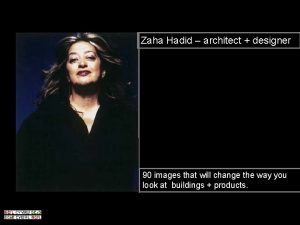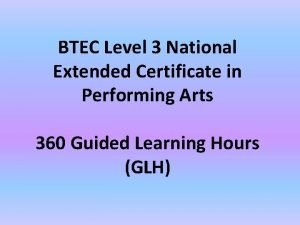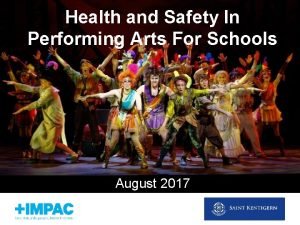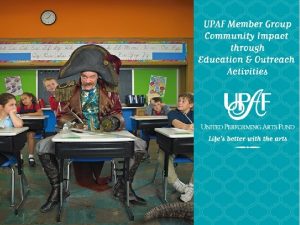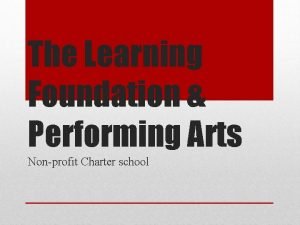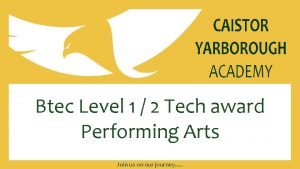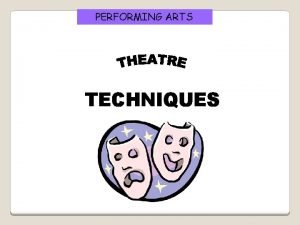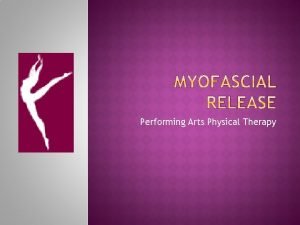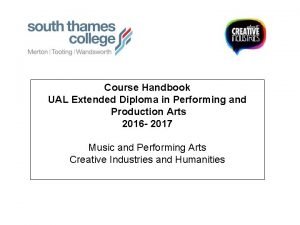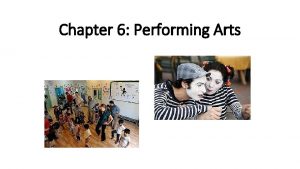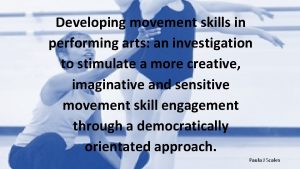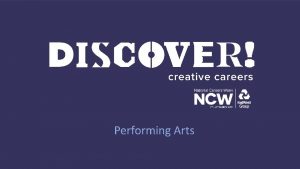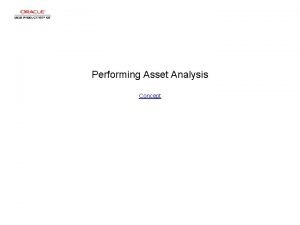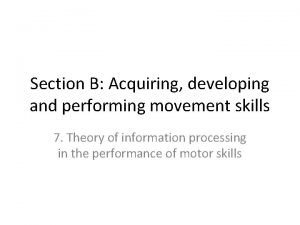Developing movement skills in performing arts an investigation








- Slides: 8

Developing movement skills in performing arts: an investigation to stimulate a more creative, imaginative and sensitive movement skill engagement through a democratically orientated approach. Paula J Scales

Butterworth, J. 2004 Teaching Choreography in higher education: a process continuum model. Research in Dance Education 5 (1), 45 – 67.

Macmillan used emotion, behaviour and narrative in his creative process, which he expressed through the dancers' body, portraying inner feelings through emotive choreography (Larimer 2016)

Lesson Plan No of pupils: 11 Girls: 8 Boys: 3 Learning objectives: To understand how the Feldenkrais method can help to locate and gain a connection to the body. Be able to apply the technique to the exercises and choreographic tasks. Outcomes: Improved understanding of movement and connection to the body when performing choreography. Value the importance that body awareness can contribute to and improve dance technique Improved quality of choreographic work. Activities Starter: Explain the scheme of work Short background to somatic practice and Feldenkrais Technique Development: Practical exercises 1. Remain sitting on chair – guided through verbal explanation – finding centre then giving time to think about where parts of the body where i. e. shoulders, waist, ribs, hips etc. 2. Small rocking motion – fwd, centre, and then backwards – thinking about what muscles and parts of the body have to work in order to do this. 3. Progress to arm movements – extending and also thinking about the body and the use of breath. 4. Getting up off the chair which muscles do you engage to do this? Repeat in reverse. 5. From stood, bending down, thoughts about engagement of the body, alignment of the spine and connection with the body - including 'touch' were necessary. 6. Short warm up – plies, tendus, transfer of weight, jumps – applying the Feldenkrais technique including 'touch' were necessary. 7. Work on choreographic pieces.

Student Responses • The Felderais movement at the beginning of the lesson helped me to access and become intone with my body. It helped me because I was able to feel how my bones moved whilst doing certain movements. This helped me to understand how to use my body in dance, as I felt how the bones were moving and how to extend my movements

• At first I could not feel any movement of the body but once I had become aware of what I was using to move my body parts, I felt that my stomach was what made me stand up after I had concentrated more on what muscles I was using. After I had connected with my body and muscles this made my gentle movements more accurate as I had full awareness of my actions

• Knowing where the different parts of your body are, enables you to have control of your body and move in a fluent way. Although you assume that you are aware of where for example your shoulders hips are, when you think in depth about it you are able to perform with more ease. I felt as though I was more balanced after this warm up.

Bibliography Journals • Butterworth, J. 2004 Teaching Choreography in higher education: a process continuum model. Research in Dance Education 5 (1), 45 – 67. Websites • Larimer, A. 2016 Articulate Bodies: The Value of a Somatic Curriculum in a Virtual World. Journal of Physical Education, Recreation & Dance. 87 (3) 22 - 27
